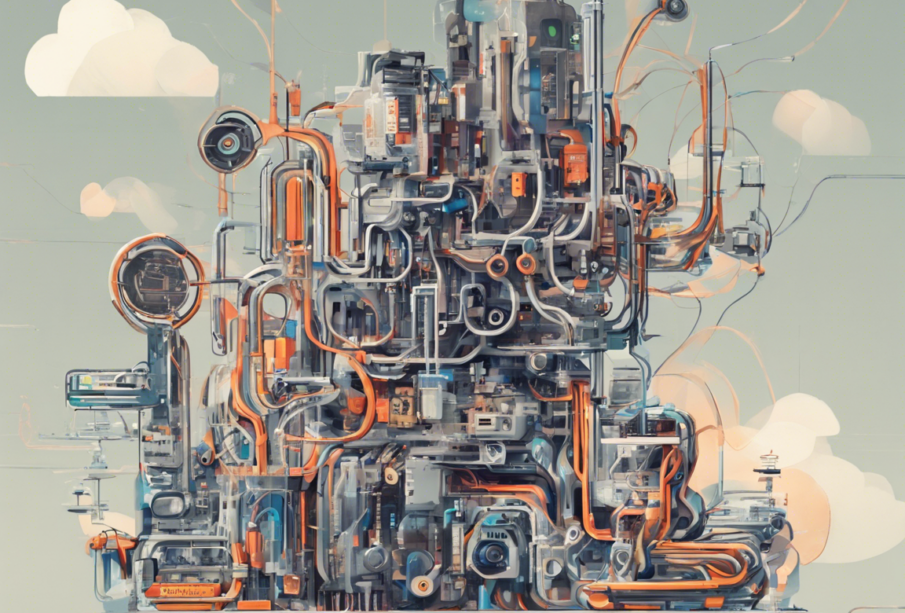Unveiling the Latest Tech Trends with TechForbess

In today’s fast-paced digital landscape, the technology industry is constantly evolving, setting new trends, and making groundbreaking advancements. From artificial intelligence to virtual reality, from blockchain to Internet of Things (IoT), there is no shortage of innovation shaping the way we live, work, and interact with the world around us. In this article, we will delve into the latest tech trends that are revolutionizing various sectors and driving the next wave of technological progression.
Artificial Intelligence (AI) and Machine Learning (ML)
Artificial Intelligence and Machine Learning technologies have been at the forefront of innovation in recent years. AI-powered applications are being used across industries for predictive analytics, automation, natural language processing, and more. Machine Learning algorithms are enabling computers to learn from data and make predictions or decisions without being explicitly programmed. In 2021, we can expect to see further advancements in AI and ML, with improved algorithms, increased automation, and enhanced decision-making capabilities.
5G Technology
The rollout of 5G technology is set to revolutionize the way we connect and communicate. With faster speeds, lower latency, and higher capacity, 5G networks will enable a new era of connectivity for devices, machines, and systems. This technology will pave the way for innovations such as autonomous vehicles, smart cities, augmented reality, and the Internet of Things. As more countries deploy 5G networks, we can anticipate significant advancements in mobile technology and communication infrastructure.
Blockchain and Cryptocurrency
Blockchain technology, most commonly associated with cryptocurrencies like Bitcoin and Ethereum, has applications that extend far beyond digital currencies. Blockchain is a decentralized, distributed ledger that securely records transactions across a network of computers. In addition to finance, blockchain technology is being utilized in supply chain management, healthcare, voting systems, and more. The rise of decentralized finance (DeFi) and non-fungible tokens (NFTs) have further highlighted the versatility and potential of blockchain technology.
Internet of Things (IoT)
The Internet of Things refers to the network of physical devices embedded with sensors, software, and connectivity to exchange data and communicate with other devices over the internet. IoT technology is being used in smart homes, wearable devices, industrial automation, and smart cities. As IoT devices become more prevalent, the need for robust cybersecurity measures to protect data and privacy will be a key focus in 2021 and beyond.
Cybersecurity
With the increasing digitization of businesses and personal information, the importance of cybersecurity cannot be overstated. Cyber threats like ransomware, phishing attacks, and data breaches are becoming more sophisticated, posing a significant risk to organizations and individuals. As such, there is a growing emphasis on developing AI-powered cybersecurity solutions, implementing zero-trust security frameworks, and enhancing data encryption protocols to safeguard against cyber threats.
Augmented Reality (AR) and Virtual Reality (VR)
Augmented Reality and Virtual Reality technologies are transforming the way we experience and interact with the digital world. AR overlays digital information onto the real world, enhancing our perception of reality, while VR immerses users in a simulated environment. These technologies have applications in gaming, entertainment, education, training, and virtual meetings. As the demand for immersive experiences grows, we can expect to see more innovations in AR and VR content creation and distribution.
Quantum Computing
Quantum Computing is a cutting-edge technology that leverages the principles of quantum mechanics to perform complex computations at exponentially faster speeds than traditional computers. Quantum computers have the potential to revolutionize fields such as cryptography, drug discovery, optimization problems, and artificial intelligence. While still in the early stages of development, quantum computing holds promise for solving some of the most challenging computational problems facing society.
Robotics and Automation
Advancements in robotics and automation are reshaping industries such as manufacturing, healthcare, agriculture, and logistics. Robots are being used for repetitive tasks, dangerous environments, and precision operations that are beyond human capabilities. Collaborative robots, known as cobots, are designed to work alongside humans, enhancing efficiency and productivity. As robotic technology continues to evolve, we can expect to see more agile and adaptable robots that can perform a diverse range of tasks.
Edge Computing
Edge Computing is a distributed computing paradigm that brings data storage and computation closer to the location where it is needed. By processing data at the edge of the network, closer to devices and sensors, edge computing reduces latency, conserves bandwidth, and enhances real-time processing capabilities. Edge Computing is crucial for applications that require low latency, such as autonomous vehicles, industrial IoT, and smart infrastructure.
Frequently Asked Questions (FAQs)
- What is the difference between AI and ML?
-
Artificial Intelligence (AI) refers to the broader concept of machines capable of carrying out tasks in a way that we would consider “smart.” Machine Learning (ML) is a subset of AI that uses statistical techniques to enable machines to improve at tasks with experience.
-
How does blockchain ensure security?
-
Blockchain technology ensures security through decentralization and cryptographic principles. Transactions are recorded on a distributed ledger across a network of computers, making it immutable and tamper-proof.
-
What are the benefits of 5G technology?
-
Some benefits of 5G technology include faster speeds, lower latency, greater capacity, improved connectivity for devices, and support for emerging technologies like IoT, AR, and VR.
-
How is cybersecurity evolving to combat advanced threats?
-
Cybersecurity is evolving by incorporating AI for threat detection, implementing zero-trust security models, enhancing encryption techniques, and promoting security awareness and training programs.
-
What are some practical applications of IoT technology?
- Practical applications of IoT technology include smart homes, wearable devices, asset tracking, smart cities, industrial automation, environmental monitoring, and healthcare systems.
In conclusion, the latest tech trends outlined above represent the forefront of technological innovation and have the potential to reshape industries, enhance efficiency, and improve quality of life. As we navigate the ever-evolving tech landscape, staying informed about these trends will be essential for businesses, consumers, and technology enthusiasts alike. Embracing these advancements and leveraging them effectively will be key to unlocking the full potential of technology in the 21st century.




